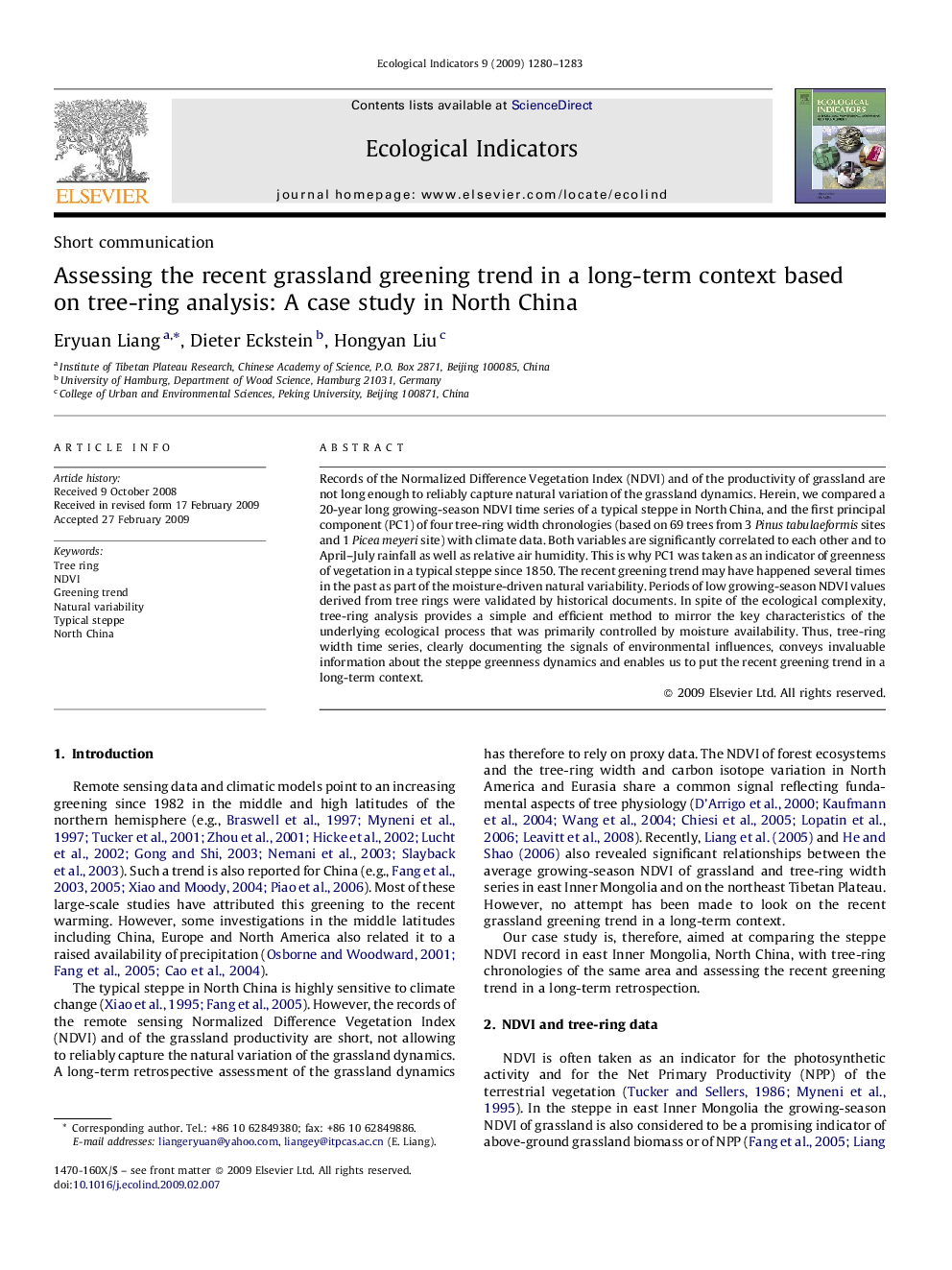| Article ID | Journal | Published Year | Pages | File Type |
|---|---|---|---|---|
| 4374358 | Ecological Indicators | 2009 | 4 Pages |
Records of the Normalized Difference Vegetation Index (NDVI) and of the productivity of grassland are not long enough to reliably capture natural variation of the grassland dynamics. Herein, we compared a 20-year long growing-season NDVI time series of a typical steppe in North China, and the first principal component (PC1) of four tree-ring width chronologies (based on 69 trees from 3 Pinus tabulaeformis sites and 1 Picea meyeri site) with climate data. Both variables are significantly correlated to each other and to April–July rainfall as well as relative air humidity. This is why PC1 was taken as an indicator of greenness of vegetation in a typical steppe since 1850. The recent greening trend may have happened several times in the past as part of the moisture-driven natural variability. Periods of low growing-season NDVI values derived from tree rings were validated by historical documents. In spite of the ecological complexity, tree-ring analysis provides a simple and efficient method to mirror the key characteristics of the underlying ecological process that was primarily controlled by moisture availability. Thus, tree-ring width time series, clearly documenting the signals of environmental influences, conveys invaluable information about the steppe greenness dynamics and enables us to put the recent greening trend in a long-term context.
